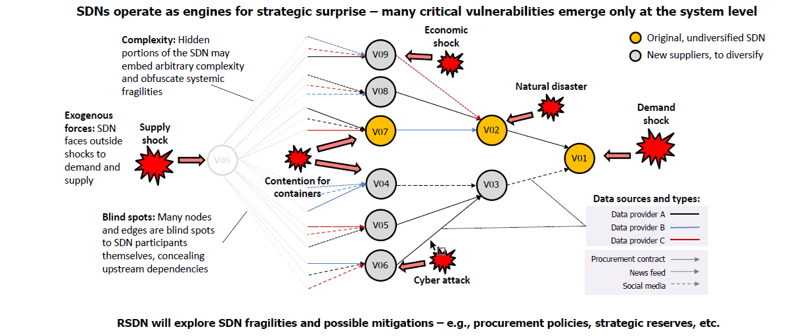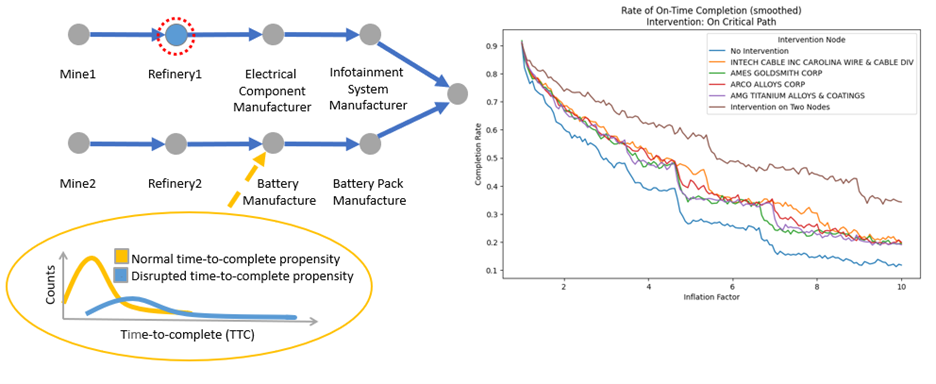

The RADS team is serving as government evaluators for this DARPA project, where our expertise in network science and in the resilience of complex systems helps this ground-breaking effort to address critical supply chain problems.
https://www.darpa.mil/program/resilient-supply-and-demand-networks
The Department of Defense (DoD) has a critical need to secure its sources of materiel against both intentional—including adversarial—and unintentional disruptions. Extensive global networks of private-sector vendors, commonly called “supply chains,” collaborate to provide these key resources, including precursor components and materials. The Resilient Supply-and-Demand Networks (RSDN) program adopts the phrase “supply-and-demand network” (SDN) in lieu of “supply chain” to emphasize that the strategic challenges are more extensive than the logistic challenges of delivering (“supplying”) materiel.
SDNs are open, complex, evolving systems whose dynamics reflect the impact of both external factors (e.g., conflict, climate change) and internal behaviors (e.g., inventory management). These factors are often driven by the locally focused decisions of SDN participants themselves. The economic forces of globalization have historically emphasized SDN efficiency (cost and timeliness) over SDN resilience (response to shocks). SDN resilience is a characteristic of the SDN system as a whole. Resilience enhancements, therefore, require coordinated action among SDN participants, who may individually lack the incentive and discretion to undertake this complex process.
SDNs are potential sources of strategic surprise for the DoD. Surprise in the context of SDNs is rarely beneficial. Key underlying sources of SDN surprise are:
To expose and mitigate these sources of surprise, RSDN will develop novel information resources and practical analytical tools, including:
Disasters, both natural and man-made, can cause disruptions to infrastructure and strategic networks.

Modeling and quantifying disruptions, subsequent system responses, and the overall results for system functionality. Recommending strategies for future responses to disruptions as well as planning initiatives that are poised to enable easier and faster recovery in the future.


Expanding the analytical methodologies for network resilience would enable better planning for system management before a disruption, as it is occurring, and in the immediate aftermath. Improved system resilience will decrease the time that a system cannot provide its critical function according to its purpose in broader society.